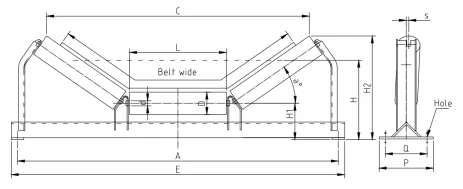 Afrikaans
Afrikaans  Albanian
Albanian  Amharic
Amharic  Arabic
Arabic  Armenian
Armenian  Azerbaijani
Azerbaijani  Basque
Basque  Belarusian
Belarusian  Bengali
Bengali  Bosnian
Bosnian  Bulgarian
Bulgarian  Catalan
Catalan  Cebuano
Cebuano  Corsican
Corsican  Croatian
Croatian  Czech
Czech  Danish
Danish  Dutch
Dutch  English
English  Esperanto
Esperanto  Estonian
Estonian  Finnish
Finnish  French
French  Frisian
Frisian  Galician
Galician  Georgian
Georgian  German
German  Greek
Greek  Gujarati
Gujarati  Haitian Creole
Haitian Creole  hausa
hausa  hawaiian
hawaiian  Hebrew
Hebrew  Hindi
Hindi  Miao
Miao  Hungarian
Hungarian  Icelandic
Icelandic  igbo
igbo  Indonesian
Indonesian  irish
irish  Italian
Italian  Japanese
Japanese  Javanese
Javanese  Kannada
Kannada  kazakh
kazakh  Khmer
Khmer  Rwandese
Rwandese  Korean
Korean  Kurdish
Kurdish  Kyrgyz
Kyrgyz  Lao
Lao  Latin
Latin  Latvian
Latvian  Lithuanian
Lithuanian  Luxembourgish
Luxembourgish  Macedonian
Macedonian  Malgashi
Malgashi  Malay
Malay  Malayalam
Malayalam  Maltese
Maltese  Maori
Maori  Marathi
Marathi  Mongolian
Mongolian  Myanmar
Myanmar  Nepali
Nepali  Norwegian
Norwegian  Norwegian
Norwegian  Occitan
Occitan  Pashto
Pashto  Persian
Persian  Polish
Polish  Portuguese
Portuguese  Punjabi
Punjabi  Romanian
Romanian  Russian
Russian  Samoan
Samoan  Scottish Gaelic
Scottish Gaelic  Serbian
Serbian  Sesotho
Sesotho  Shona
Shona  Sindhi
Sindhi  Sinhala
Sinhala  Slovak
Slovak  Slovenian
Slovenian  Somali
Somali  Spanish
Spanish  Sundanese
Sundanese  Swahili
Swahili  Swedish
Swedish  Tagalog
Tagalog  Tajik
Tajik  Tamil
Tamil  Tatar
Tatar  Telugu
Telugu  Thai
Thai  Turkish
Turkish  Turkmen
Turkmen  Ukrainian
Ukrainian  Urdu
Urdu  Uighur
Uighur  Uzbek
Uzbek  Vietnamese
Vietnamese  Welsh
Welsh  Bantu
Bantu  Yiddish
Yiddish  Yoruba
Yoruba  Zulu
Zulu chevron wing pulley
The Chevron Wing Pulley An Essential Component in Conveyor Systems
In the realm of materials handling, the choice of components is paramount to the efficiency and effectiveness of conveyor systems. One such component that has gained significant attention in recent years is the chevron wing pulley. This specialized type of pulley has become increasingly popular due to its distinctive design and the myriad benefits it offers in various industrial applications.
Understanding the Design of Chevron Wing Pulleys
Chevron wing pulleys are characterized by their unique wing-like structures that protrude from the pulley body. This design serves a critical function it enhances the performance of conveyor belts by helping to prevent material spillage, improve belt tracking, and reduce slippage. The chevron pattern allows for better engagement with the conveyor belt, ensuring that materials are transported efficiently from one point to another.
Typically made from durable materials such as steel or polymer, chevron wing pulleys are engineered to withstand harsh industrial environments. Their robust design means they can handle heavy loads and withstand the wear and tear of continuous operation. This resilience makes them ideal for sectors such as mining, agriculture, and manufacturing, where heavy materials need to be transported over long distances.
Advantages of Using Chevron Wing Pulleys
1. Improved Material Handling One of the primary advantages of chevron wing pulleys is their ability to minimize spillage. Traditional pulleys can lead to considerable loss of materials if they are not designed with effective containment features. The chevron design, with its raised wings, helps to keep materials securely on the belt, reducing waste and increasing efficiency.
chevron wing pulley

2. Enhanced Belt Tracking The unique shape of chevron wing pulleys plays a vital role in belt tracking. Misalignment during operation can lead to significant issues, including increased wear on the belt and the potential for accidents. Chevron wing pulleys maintain better control over the belt, ensuring smooth operation and prolonging the life of the conveyor system.
3. Reduced Slippage Slippage occurs when the belt fails to effectively transfer power to the materials being conveyed. Chevron wing pulleys enhance friction between the pulley and the belt, significantly reducing slippage and facilitating smoother operations. This improved engagement also helps in maintaining consistent speeds, ultimately enhancing productivity.
4. Versatility Chevron wing pulleys are highly versatile and can be adapted for various conveyor systems and configurations. Whether in inclined systems where material movement is vertical or horizontal applications, these pulleys can be optimized to meet specific operational needs. This versatility makes them a preferred choice across industries.
5. Cost-Effective Solution While the initial investment in chevron wing pulleys may be higher than traditional pulleys, the long-term benefits outweigh the costs. The reduced material spillage, lower maintenance needs, and extended lifespan of the conveyor system all contribute to significant savings over time, making chevron wing pulleys a financially wise investment.
Conclusion
In conclusion, the chevron wing pulley has emerged as a vital component in modern conveyor systems. Its unique design and numerous advantages significantly enhance the performance and reliability of material handling operations. By minimizing spillage, improving belt tracking, and reducing slippage, these pulleys contribute to greater operational efficiency and cost savings. As industries continue to seek ways to optimize their processes, the chevron wing pulley stands out as a key player in advancing conveyor technology and improving productivity across various sectors.
-
Revolutionizing Conveyor Reliability with Advanced Rubber Lagging PulleysNewsJul.22,2025
-
Powering Precision and Durability with Expert Manufacturers of Conveyor ComponentsNewsJul.22,2025
-
Optimizing Conveyor Systems with Advanced Conveyor AccessoriesNewsJul.22,2025
-
Maximize Conveyor Efficiency with Quality Conveyor Idler PulleysNewsJul.22,2025
-
Future-Proof Your Conveyor System with High-Performance Polyurethane RollerNewsJul.22,2025
-
Driving Efficiency Forward with Quality Idlers and RollersNewsJul.22,2025





























